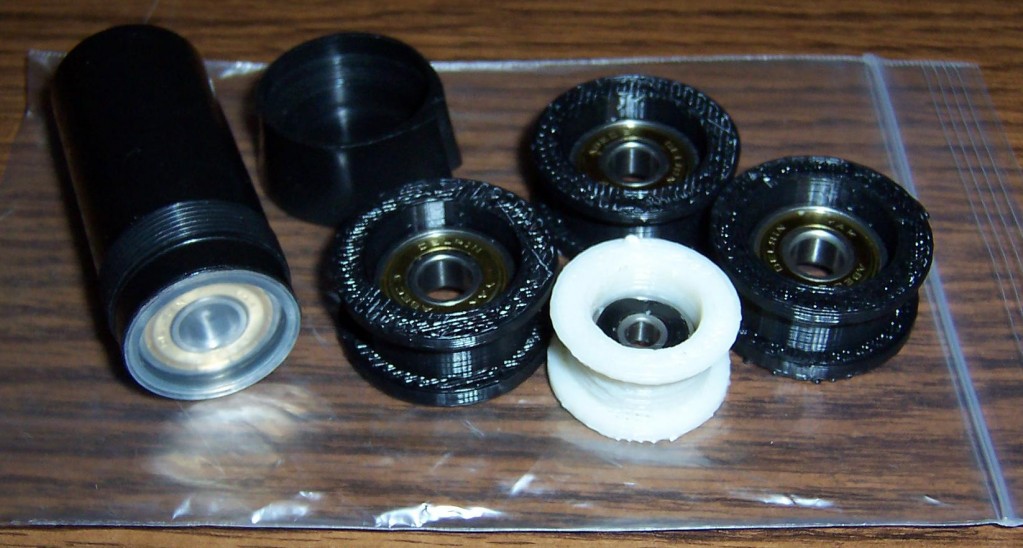A commentator suggested that the RepRap Challenge prize is set up to avoid paying out. This seems like a silly and vacuous charge to me. The $20,000 and $80,000 prize payouts have firm award dates of 12/31/2012 and 12/31/2015, respectively. If someone hasn’t achieved the specific milestones by those dates, by the terms of their declarations (and assuming they are good to their word), they’ll have to award those sums to whoever is closest.
In any case, here’s a summary of the list of the requirements for those interested.
Interim Personal Manufacturing prize of $20,000.00 to be awarded on 12/31/2012:
- Print at least three different materials, including one that is usefully electrically conductive.
- The ability to print electronic circuit boards.
- Print beds1 must be of a material which may be reused with minimal refurbishment for at least 20 print cycles.
- Maintain a total materials and parts cost under $200 and that 90% of the volume of the printer parts be printed.2
- Demonstrate a build volume of the printer above 300x300x100mm in order to insure that items daily utility can be printed.
- The capacity to print a full set of parts for a complete replica of itself within 10 days unattended save for clearing no more than one printer head jam.
- The ability to print autonomously without a PC attached.
- Uses no more than 60 watts of electrical power.
Grand Personal Manufacturing Prize of $80,000.00 to be awarded on 12/31/2015:
- That the cost of the material used for printing does not exceed $4/kilogram.
- The capacity to print a full set of parts for a complete replica of itself within 7 days, including the time for reloading, and clearing of printer head jams.3
- Maintain a total materials and parts cost under $200 and that 90% of the volume of the printer parts be printed.4
- Participating teams are expected to regularly publish and make available their technology on an ongoing basis. All technology developed by participating teams becomes open source under a GPL or BSD license. Therefore, the winning team will have to have published at least some of their innovations more than 12 months before the deadline.
- Print beds are flat surfaces onto which parts are printed. [↩]
- Print beds are not necessarily a permanent part of the printer and are not figured into either the cost or the volume requirements of a printer. [↩]
- According to the article it currently takes approximately 21 days with 90% of the time requiring human involvement. [↩]
- Plastics such as HDPE and Polypropylene, of which millions of tons exist as waste matter, may be suitable candidates, and recycling of such waste material would be viewed favorably by the judging panel. [↩]

